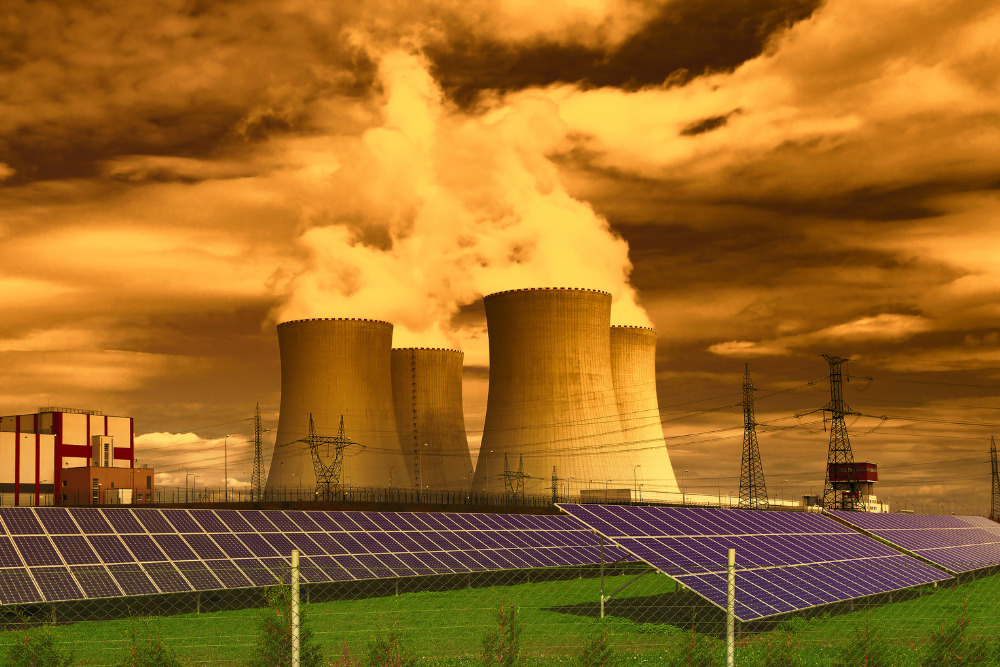
Consumers recognize the economic benefits of solar energy systems, but what does a solar panel carbon footprint look like? How "green" are they really, and are they the ultimate solution in reducing greenhouse gasses associated with fossil fuels?
What Is A Carbon Footprint?
A carbon footprint is the total amount of carbon dioxide and other greenhouse gasses (GHG), such as methane, produced by a person's activities or throughout a product's lifecycle. For solar PV systems, the carbon footprint includes the emissions produced while sourcing raw materials, manufacturing, shipping, and disposal.
While solar panels produce no emissions while in use and producing clean energy, they still have a measurable carbon footprint throughout their lifecycle.
How The Lifecycle Of A Solar Panel Affects Its Carbon Footprint
While solar panels are much more environmentally friendly than fossil fuels, they do contribute to Co2 emissions at various phases of their lifecycle.
- Material sourcing: Solar panels use raw materials, including silicon, aluminum, and copper. Mining of these materials requires heavy machinery that uses energy from natural oils and coal, which are leading GHG emitters.
- Manufacturing: Solar panel manufacturing processes differ depending on the materials used. However, most include converting silica into polysilicon, the primary component in solar cells. Further, the polysilicon is processed into crystalline silicon and cut into wafers for polycrystalline and monocrystalline panels. Cutting and assembling the materials into functional panels requires a lot of electricity. While some manufacturers power their facilities with renewable energy sources, like solar, others still rely on traditional power plants that burn fossil fuels for electricity.
- Constructing of solar power plants: Constructing solar power plants and solar farms is an energy-intensive process and heavily contributes to the solar carbon footprint.
- Shipping solar panels: Shipping solar panels and related raw materials require using carbon-related fuel sources for trains, ships, and freight trucks.
- Decommissioning: Most solar panels have a 25-year warranty but can last up to 30 years or longer. Many of the first solar panels are just coming into their end-of-life phase as industry experts work to find the best way to decommission them. While many of the materials used in solar panels can be recycled and reused, it's still an energy-intensive process.

How Much Carbon Dioxide Does A Solar Panel Produce?
According to the Intergovernmental Panel on Climate Change (IPCC), solar panels produce lifecycle carbon dioxide emissions of about 40g equivalent for every kilowatt hour of energy they generate.
Lifecycle emissions mean the total amount of emissions produced from the extraction of raw materials to the disposal of old panels after years of use.
The extraction of raw materials and the manufacturing process account for about 70% of these emissions, while solar plant operation and maintenance and decommissioning contribute to the remaining 30%.
But these amounts are manageable compared to the high greenhouse gas emissions of non-renewable energies. These include 820 g CO2 eq/kWh for coal and 490 g CO2 eq/kWh for natural gas, which will continue to rise without proper mitigation measures.
How To Reduce The Carbon Footprint Of Solar Panels
Although solar systems are among the leading renewable energy sources, there are opportunities to reduce their carbon footprint.
Some measures to achieve this include:
- Producing low carbon silicon: Extraction and processing of silicon used in solar PV panels contributes to most of the emissions. Collecting and recycling the silicon waste lost during the wafer cutting process, plus recycling the silicon from decommissioned panels, can help create a circular economy and reduce emissions surrounding silicon extraction and processing.
- Incorporating solar energy in the manufacturing process: Manufacturing plants that run on renewable energy, like solar, wind, or water, can significantly reduce emissions during the production process.
- Recycling: Recycling old solar panels promotes sustainability and reduces their carbon footprint. Reusing some of the materials, like silicon and aluminum, reduces emissions from the extraction of new materials.
- Consuming low-carbon panels: Consumers can reduce solar panel carbon footprint by buying from manufacturers committed to sustainable practices. This will encourage more manufacturers to adopt best practices for creating low-carbon panels.

What Energy Source Has The Lowest Carbon Footprint?
Nuclear energy has the lowest carbon footprint. This is according to a report by the United Nations Economic Commission for Europe (UNECE).
The report is based on an analysis of the lifecycle greenhouse emissions of various energy sources, including coal, natural gas, photovoltaics, nuclear power, and hydropower.
From the lifecycle assessment, nuclear power produces 5.1–6.4 g CO2 eq./kWh, while coal and natural gas emit 751 g CO2 eq./kWh and 403–513 g CO2 eq./kWh, respectively.


